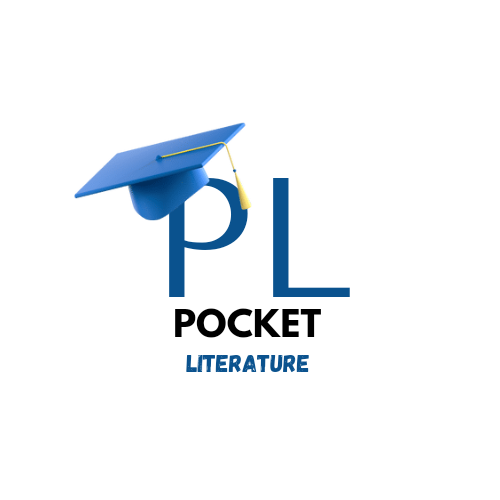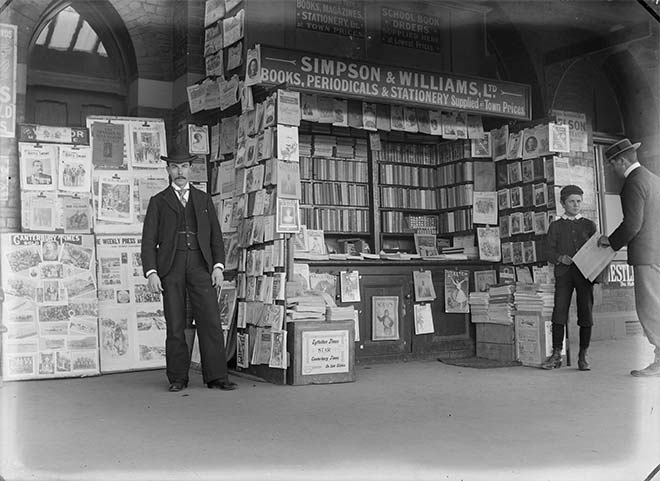Introduction
Literary periodicals have been vital in shaping English
literature, offering platforms for criticism, fiction, essays, and cultural
discourse. From the 18th century to modern academic journals, they have
influenced literary traditions and intellectual debate.
Early Literary Periodicals
The 18th century saw the rise of periodicals like The
Tatler (1709–1711) and The Spectator (1711–1712), founded by Richard
Steele and Joseph Addison, which pioneered the modern essay. Samuel Johnson’s The
Rambler (1750–1752) continued this tradition with a more serious tone.
19th-Century Expansion
With rising literacy, magazines like Household Words
and All the Year Round (edited by Charles Dickens) gained popularity,
featuring serialized fiction. Critical journals like The Monthly Review
and The Analytical Review shaped literary tastes, while The
Gentleman’s Magazine (1731–1907) became one of the longest-running
periodicals.
Modernism and Avant-Garde
The early 20th century introduced experimental journals like
Seven Arts (1916–1917) and The English Review (1908), publishing
modernist writers such as D. H. Lawrence. New Masses (1926–1948) took a
political approach, merging literature with socialist ideals.
Contemporary Scholarship
Today, periodicals have evolved into academic journals like The Review of English Studies and Victorian Studies, which analyze literature critically. Interdisciplinary journals like Utopian Studies and African American Review explore broader cultural perspectives.
----------------------------------------------------------18th Century Literary Periodicals
- The
Tatler (1709–1711)
- Founded
by Richard Steele; later joined by Joseph Addison.
- Focused
on social commentary, politics, and manners.
- One
of the first periodicals to blend entertainment with moral instruction.
- The
Spectator (1711–1712, revived later)
- Also
founded by Steele and Addison.
- Known
for its essays on morality, philosophy, and daily life.
- Influenced
modern journalism and essay writing.
- The
Rambler (1750–1752)
- Created
by Samuel Johnson.
- Serious
and reflective essays on literature, philosophy, and human nature.
- Less
humorous but deeply influential in literary criticism.
- The
London Magazine (1732–1785, later revived)
- Competed
with The Gentleman’s Magazine.
- Published
poetry, essays, and serialized fiction.
- Revived
in the 19th and 20th centuries as a literary journal.
- The
Monthly Review (1749–1845)
- One
of the first major book review journals.
- Helped
shape public literary opinion.
- Covered
politics, philosophy, and history alongside literature.
- The
Bee (1759)
- Short-lived
periodical by Scottish writer James Boswell.
- Covered
literature, science, and philosophy.
- Aimed
to educate and entertain general readers.
- The
European Magazine and London Review (1782–1826)
- Literary
and cultural review covering books, theatre, and politics.
- Featured
works by notable authors of the time.
- Aimed
at a literate middle-class audience.
- The
Adventurer (1752–1754)
- Essay
periodical similar to The Rambler.
- Contributors
included Samuel Johnson.
- Focused
on morality and human behavior.
19th Century Literary and Cultural Magazines
- The
Gentleman’s Magazine (1731–1907)
- One
of the longest-running periodicals.
- Published
literary works, history, and antiquarian studies.
- Important
source for 18th- and 19th-century literary culture.
- The
Examiner (1808–1886)
- Political
and literary weekly magazine.
- Edited
by Leigh Hunt, known for radical views.
- Published
works by Shelley, Byron, and Keats.
- Godey’s
Lady’s Book (1830–1878)
- Influential
American women’s magazine.
- Published
literature, fashion, and household advice.
- Featured
early works by Edgar Allan Poe.
- Overland
Monthly (1868–1935, later revived)
- Californian
magazine promoting Western literature.
- Published
early works of Jack London and Mark Twain.
- Focused
on regional identity and frontier themes.
- Temple
Bar (1860–1906)
- Victorian
literary magazine.
- Featured
serialized novels and essays.
- Published
works by Anthony Trollope and Wilkie Collins.
- Macmillan’s
Magazine (1859–1907)
- Literary
magazine featuring essays and fiction.
- Published
works by Tennyson, Hardy, and Arnold.
- Had
a strong focus on contemporary literature.
- The
Cornhill Magazine (1860–1975)
- Founded
by publisher George Smith.
- Serialized
works by Thackeray, Hardy, and Eliot.
- Combined
fiction with literary and social commentary.
- Once
a Week (1859–1880)
- Illustrated
literary magazine.
- Alternative
to Household Words.
- Featured
stories, poems, and essays.
- All
the Year Round (1859–1895)
- Founded
and edited by Charles Dickens.
- Serialized
Great Expectations and other famous novels.
- Successor
to Household Words.
- The
Pall Mall Magazine (1893–1914)
- Late
Victorian literary magazine.
- Published
works by Kipling, Stevenson, and Wells.
- Covered
arts, culture, and contemporary issues.
- Longman’s
Magazine (1882–1905)
- Victorian
periodical with fiction and essays.
- Published
stories by Thomas Hardy and H. Rider Haggard.
- More
affordable and accessible to middle-class readers.
- Pearson’s
Magazine (1896–1939)
- Popular
for science fiction and adventure stories.
- Published
early detective fiction.
- Featured
serial novels and speculative fiction.
20th Century Modernist and Academic Periodicals
- The
English Review (1908–1937)
- Founded
by Ford Madox Ford.
- Published
works by modernist writers like D. H. Lawrence.
- Known
for literary experimentation.
- New
Masses (1926–1948)
- Leftist
American magazine.
- Focused
on literature, politics, and art.
- Published
works by Langston Hughes and Ernest Hemingway.
- The
Chap-Book (1894–1898)
- American
magazine of art and literature.
- Early
example of small press publishing.
- Helped
define literary modernism.
- London
Mercury (1919–1939)
- Literary
magazine promoting new poetry and fiction.
- Published
works by T. S. Eliot and other modernists.
- Served
as a bridge between Victorian and modern literature.
- Hound
& Horn (1927–1934)
- American
modernist literary journal.
- Focused
on experimental poetry and fiction.
- Published
early works of Ezra Pound.
- Seven
Arts (1916–1917)
- Short-lived
but influential modernist magazine.
- Advocated
for artistic independence.
- Published
work by Sherwood Anderson and Robert Frost.
Contemporary Literary and Academic Journals
- The
New York Review of Books (1963–present)
- One
of the most influential literary review magazines.
- Features
book reviews, essays, and political commentary.
- Known
for its intellectual rigor.
- Journal
of British Studies
- Scholarly
journal on British history and literature.
- Covers
topics from the medieval period to modern Britain.
- Journal
of Victorian Culture
- Academic
journal focused on Victorian literature and history.
- Explores
themes of gender, empire, and industrialization.
- The
Review of English Studies
- Leading
journal for English literary criticism.
- Covers
Renaissance to modern literature.
- Victorian
Studies
- Focuses
on 19th-century British literature and culture.
- Explores
intersections of literature, history, and social change.
- ELH
(English Literary History)
- Leading
academic journal in literary studies.
- Covers
theoretical and historical perspectives.
- Mythlore
- Journal
focused on myth and fantasy literature.
- Covers
Tolkien, C. S. Lewis, and other fantasy writers.
- Utopian
Studies
- Academic
journal on utopian literature and theory.
- Explores
political, philosophical, and literary aspects.
- The
Comparatist
- Journal
of comparative literature.
- Focuses
on cross-cultural literary studies.
- Early
American Literature
- Scholarly
journal on pre-20th-century American literature.
- Examines
colonial and early national writing.
- SEL:
Studies in English Literature 1500–1900
- Covers
literature from the Renaissance to the 19th century.
- Provides
deep literary and historical analysis.
- African
American Review
- Leading
journal on African American literature and culture.
- Explores historical and contemporary works.






